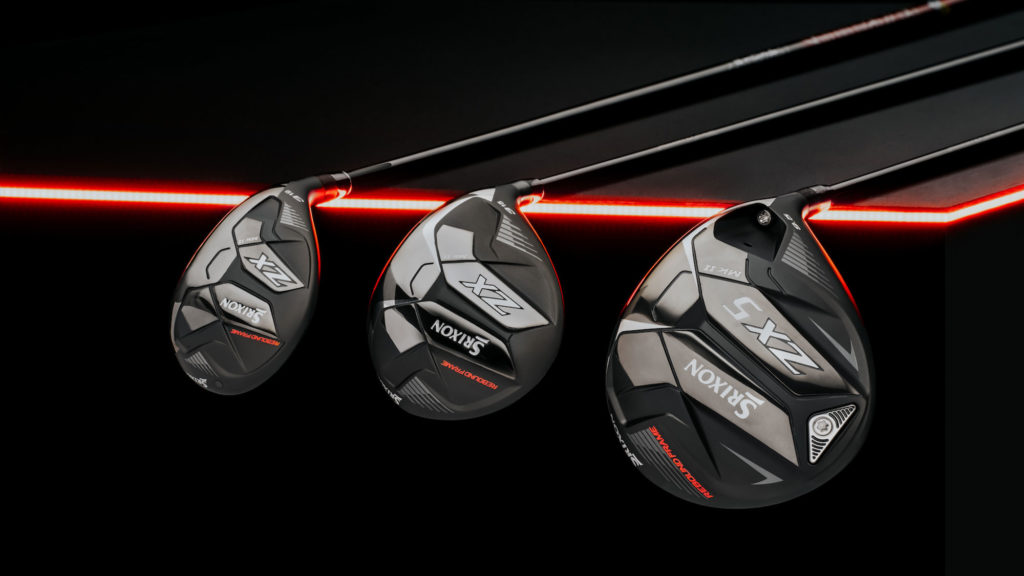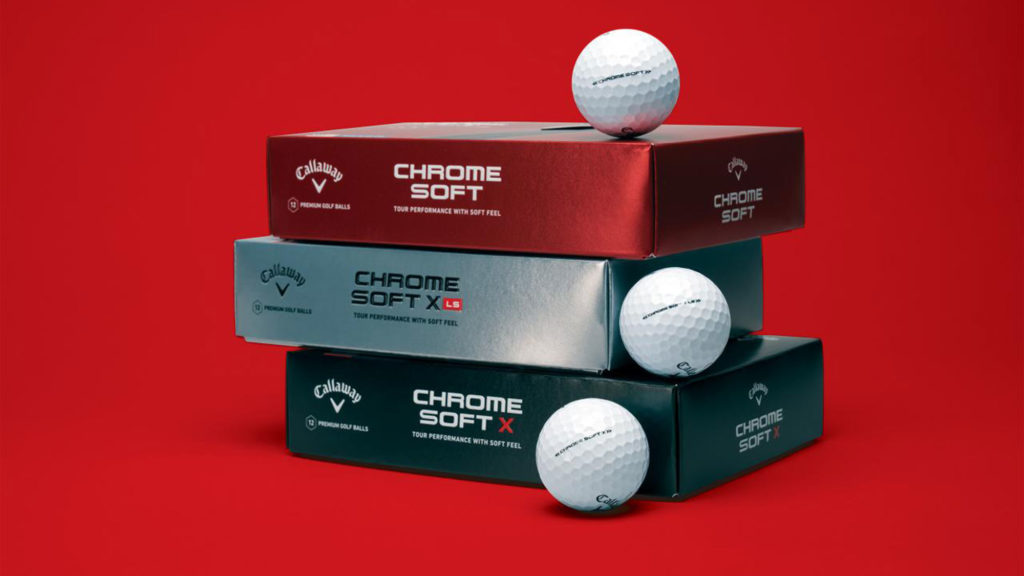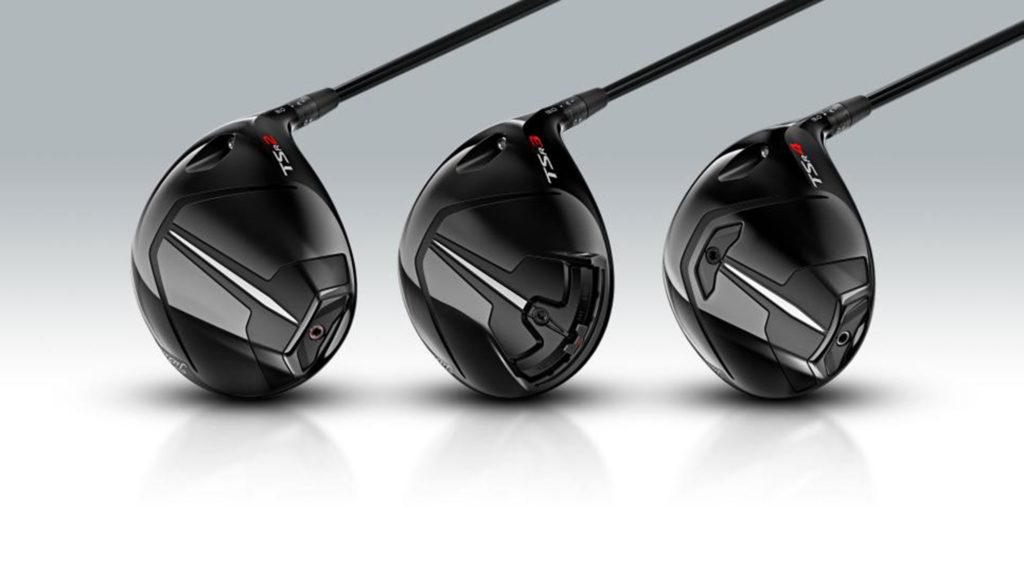Start 2023 with a bang with this selection of top-performing equipment from golf’s leading brands
TaylorMade’s all-new P·700 Series
WHAT YOU NEED TO KNOW: TaylorMade has released the latest evolution of its acclaimed P·700 Series with the all-new P·770TM, P·7MCTM and P·7MBTM irons. The three irons join P·790TM to form a family built upon three main pillars: feel, craftsmanship and performance.
THE DEEP DIVE: The all-new P·770 features a compact, tour-proven shape with a thinner top line, less offset in long irons and a shorter blade length when compared to P·790.
P·770 features FLTD CGTM, a strategic design that positions the centre of gravity lowest in long irons and progressively shifts it higher throughout the set to the shorter, weaker lofted irons. This encourages easier launch and playability in the long irons, while optimising trajectory and spin in the scoring clubs. The intuitive concept promotes consistency and control from top to bottom.
With precision playability and a hint of forgiveness, every angle of the all-new P·7MC is meticulously scrutinised to meet the performance demands of the game’s best ball-strikers.
The tour-inspired P·7MC fits the eye of discerning players. With minimal offset and perimeter weighting, this classically shaped iron delivers ultimate control and precision. A narrow sole and tight leading edge ensure consistency through the turf.
TaylorMade’s Compact Grain ForgingTM process uses 2,000 tonnes of pressure, more than double the industry standard. Used in both P·7MC and P·7MB, the additional force gave TaylorMade engineers precision control at a micro level, producing a tighter grain structure for the best possible feel and strength properties.
Meanwhile, the all-new P·7MB was designed for the best ball-strikers in the world who demand surgical control and precision shot making. Each strike with P·7MB is sensory overload, delivering unfiltered feedback and best-in-class feel.
As a result of detailed feedback from testing with Rory McIlroy and Collin Morikawa, P·7MB features a shorter blade length, brand new sole geometry, and progressive offset to create a minimalist profile that’s designed to control shot shape and trajectory.
The sole of P·7MB is one millimetre narrower than previous, meaning TaylorMade engineers had to add slightly more bounce to the leading edge which creates a completely different sensation through the turf.
Total effective bounce is a combination of sole width and bounce angle, which engineers were able to perfect by increasing the bounce angle to keep the sole from getting caught in the turf.
P·7MB is a seamless blend of traditional muscle back iron performance with a contemporary look and design. The shorter blade length of P·7MB allowed TaylorMade engineers to create an updated backbar using symmetrical geometry.
PRICE: P·770 irons are available for pre-order and go on sale on January 20, 2023, for $329 RRP (steel) and $359 RRP (graphite) per iron. P·770 is offered in 3-PW and AW and comes equipped with KBS Tour Steel shafts (X 130g, S 120g) as well as Golf Pride Z-Grip 360 in grey/black. P·7MC and P·7MB irons are available for pre-order and are available to purchase on January 20, 2023, for $329 RRP (steel) per iron. P·7MC and P·7MB are offered in 3-PW and come equipped with KBS Tour Steel shafts (X130g, S 120g) as well as Golf Pride Z-Grip 360 in grey/black.

Ping G430 family
WHAT YOU NEED TO KNOW: Unlocking more speed and distance through engineering innovations like Carbonfly Wrap without sacrificing its forgiveness, Ping has introduced the G430 family.
“The combined distance gains throughout the entire G430 family are like nothing we’ve seen from one generation of clubs to the next,” said John K. Solheim, Ping CEO and president.
THE DEEP DIVE: In the new drivers, Ping’s engineering team developed several new technologies common to all three models while applying specific advancements to each individual head, producing measurable ball-speed gains while improving sound throughout the series. The added ball speed is attributed to a shallower and thinner VFT forged face design engineered with Spinsistency, a variable roll radius technology proven on the G425 fairway woods and hybrids. The improved and pleasing sound is the result of fine-tuning the frequencies of the head through a new internal rib structure.
The MAX (460cc) remains the most forgiving and fits the widest range of golfers. A 25-gram, high-density tungsten moveable backweight influences shot shape ±8 yards between the Draw, Neutral and Fade settings. Available in 9, 10.5 and 12-degree lofts. Loft is adjustable ±1.5° and lie up to 3° flat from standard using the eight-setting Trajectory Tuning 2.0 hosel.
Exclusive to the LST (Low Spin Technology) driver is Carbonfly Wrap, a lightweight composite that covers the crown and wraps into the heel/toe sections of the skirt to save weight and lower the centre of gravity (CG) for more ball speed, less spin and higher MOI.
In all of the G430 fairway woods, Ping has developed Carbonfly Wrap to deliver more distance by positioning the CG closer to the force line to maximise ball speed, resulting in higher, longer carries, whether fit for the MAX, SFT or LST model.
The lightweight composite crown wraps into the heel and toe sections of the skirt, creating weight savings of 10 grams which are reallocated to achieve the lower the CG and increase ball speed.
Meanwhile, the multi-material G430 iron produces distance gains of approximately seven to 10 yards and improved accuracy throughout the set. It’s the result of a complex design that combines a lower CG with stronger, custom-engineered lofts and a thinner face that delivers up to two more miles per hour of ball speed – leading to significant distance gains without compromising Ping’s famous forgiveness.
A key contributor to the added distance is the PurFlex cavity badge, an innovation with seven flex zones that allow more free bending to increase ball speed across the face. In combination with a lower CG, the badge contributes to the solid feel and pleasing impact sound. The stronger lofts across the set resulted in the addition of a 41-degree pitching wedge to ensure proper gapping options and allowed for standard lofts in the traditional scoring wedges (45.5, 50, 54 and 58 degrees).
PRICE: G430 Max driver ($995); LST ($1,050); G430 fairway woods ($659); LST 3-Wood ($995); G430 hybrids ($559); G430 irons ($299 per iron, steel; $329 per iron, graphite).

Srixon ZX Mk II range
WHAT YOU NEED TO KNOW: Srixon’s new ZX Mk II range delivers tour-level performance and revolutionary energy transfer to the tee.
“With ZX Mk II, we’ve built upon the foundation of success with the previous generation,” says Jeff Brunski, Srixon’s vice-president of research and development.
THE DEEP DIVE: The all-new ZX Mk II woods provide more power where it counts: at impact. A stronger Rebound Frame design with dual flex zones delivers a seamless energy transfer from the clubface through the golf ball.
Rebound Frame’s two flex zones work harmoniously to generate enhanced ball and distance: Zone 1, the driver face, deforms inwardly at impact. Zone 2, a ring of flexibility offset from the face, deforms outwardly. When these two zones snap back to shape just after impact, the compounded energy transfer is more powerful and efficient than standard designs. Overall, Rebound Frame adds a 10 percent larger high COR area to the driver faces compared to the previous generation.
Meanwhile, the ZX Mk II drivers feature a variable thickness face pattern that is 0.25 millimetres thinner at its centre and 0.4 millimetres thicker at the perimeter than last generation. These refinements add even more COR across the face for added ball speed and distance off the tee.
The ZX7 Mk II driver delivers total control, allowing golfers to easily produce the launch conditions need for maximum workability off the tee. The ZX5 Mk II driver provides total confidence, with a larger footprint, flattened shape, and a rear weight placed low and deep for drives that launch high and straight.
The ZX Mk II fairway woods and hybrids feature similar foundational technologies as the drivers that seek to deliver more ball speed and greater distance from anywhere on the course. The entire line of ZX Mk II woods offers world-class shafts as standard options with Project X HZRDUS Black Gen 4 and Project X HZRDUS Smoke Red RDX shafts.
Meanwhile, the technologies driving the exceptional performance of the ZX Mk II irons are really exciting to launch and get into golfer’s hands, says Brian Schielke, general manager of Srixon. “Longer distances, improved feel, more control, and greater consistency are seen throughout each new iron set, and they provide a seamless transition for building a combo set,” he says.
Designed for the best ball-strikers in the world, ZX7 Mk II irons are a true players iron with incredible feel. An all-new design characteristic exclusive to ZX7 Mk II irons, PureFrame enhances feel by reducing unwanted vibrations. PureFrame is forged into the body of the iron – just behind the sweet spot – as an 80 percent thicker portion of 1020 carbon steel. The result is a remarkably soft yet solid feeling at impact that the best players demand.
Meanwhile, the rest of the ZX Mk II iron line features the second generation of Srixon’s MainFrame technology. MainFrame is a variable thickness pattern of grooves, channels, and cavities carefully milled into the backside of ZX4, ZX5, and ZX Mk II utility iron faces that maximise flex at impact. It not only boosts ball speed, but also repositions mass away from the face and into the toe for better forgiveness and consistency on every shot.
PRICE: ZX Mk II Series drivers ($749); ZX Mk II fairway woods ($499); ZX Mk II hybrids ($399); ZX7 Mk II irons ($239 steel, $269 graphite); ZX5 Mk II irons ($239 steel, $269 graphite); ZX4 Mk II iron ($239 steel, $269 graphite); ZX Mk II utility irons ($339 steel, $369 graphite).

Callaway Chrome Soft Golf Balls
WHAT YOU NEED TO KNOW: The new versions of Callaway’s Chrome Soft, Chrome Soft X and Chrome Soft X LS golf balls utilise a new process that allows for tolerances as tight as one 1,000th of an inch. That creates more consistency from ball to ball for more reliable performance.
THE DEEP DIVE: Callaway Golf realises that you can have a wonderfully designed golf ball, but if you can’t manufacture it precisely, it doesn’t mean much. That led the company to invest more than $US50 million dollars in its Massachusetts ball plant to create proprietary precision design techniques and manufacturing specifications that produce tolerances as tight as one 1,000th of an inch – all of which is used in the creation of the company’s current line of Chrome Soft, Soft X and Soft X LS golf balls.
Dubbed “precision technology”, the focus is on concentricity offset, which in layman’s terms is how centred the core is within the golf ball. When you produce multilayer golf balls, however, every layer needs to be centred. To achieve that meant moving away from 3D x-ray tech to high-definition – essentially a digital x-ray that can see and measure each layer.
“An off-centre core will affect performance as there is an unbalanced compression of the ball,” said Eric Loper, senior director of golf ball R&D at Callaway Golf. “This will create an offline shot depending on what side the imbalance is on.”
How big of a difference? According to Loper, it can be more than two miles per hour of ball speed, two degrees of launch angle and 1,200 rpm of spin. Using a robot hitting a 6-iron, the difference was nearly five metres of carry and nearly 16 metres of left-to-right dispersion. “That’s the difference between being on the green or off the green,” Loper says.
The guts of the spheres have changed as well. Each boasts a new aerodynamic dimple pattern designed to produce lower drag and a more penetrating flight. The core also received an update. “We increased the crosslink density,” Loper said. “That increases the resilience of the core which leads to more driver and long iron ball speed without changing the compression. Not changing the compression was key as it allowed us to keep the soft feel.”
The three-piece Chrome Soft is designed for lower spin on full shots to assist distance and works for a wide range of players. The previous version was four-piece but by going to a larger single-core, Callaway found it could optimise compression with its new core formulation to reduce driver-iron spin and gain speed. The single-core mantle design also showed concentricity offset benefits that led to improved downrange dispersion.
For the four-piece Chrome Soft X – the company’s most played ball on tour – the goal was to maintain the spin profile as its tour staff already was satisfied with that while picking up some speed from the re-engineered core.
The four-piece Chrome Soft X LS is the lowest-spin version of the family and boasts a new, softer cover formulation to increase spin around the greens while maintaining or slightly reducing spin on full shots.
PRICE: $79.99 per dozen. Options are also available in the company’s Major-winning Triple Track Technology for enhanced alignment, and in hi-res Truvis designs.

Titleist TSR Drivers
WHAT YOU NEED TO KNOW: The Titleist TSR family of drivers includes the TSR2, aimed at max forgiveness for those players whose impact pattern involves most of the face; the TSR3, which targets the more consistent player with extra horsepower for centre hits; and the TSR4, which focuses on the lowest spin and a more compact shape. Each features an updated face design, lower, more forward centres of gravity and aerodynamic refinements to boost club head speed.
THE DEEP DIVE: Throughout the line-up, a few powerful speed elements recur. First among those is a sleeker overall shape to the designs that has almost nothing to do with aesthetics and just about everything to do with aerodynamics. That includes an adjustment to the shaping of the hosel opening, as well as the back end of each driver that’s more squared off in what the company calls a “boat-tail” shape.
The faces of the three drivers are distinct. Since the TSR2 player is most benefited by a face that helps out on mishits, it employs a multi-level variable face thickness design to provide more consistent ball speeds on off-centre hits. Meanwhile, the TSR3 focuses less on those extremes and looks to optimise centre hits. A thicker perimeter section concentrates more flexing in the centre section than previously, something that couldn’t be done in the past with a traditional titanium alloy. The less-forgiving TSR4 head, which is only 430 cubic centimetres, is matched with a multi-thickness face design similar to the TSR2. That forgiveness in the face breeds more consistent launch and speed characteristics married with a very low-spin head design.
PRICE: $899, $1,199 (premium).



